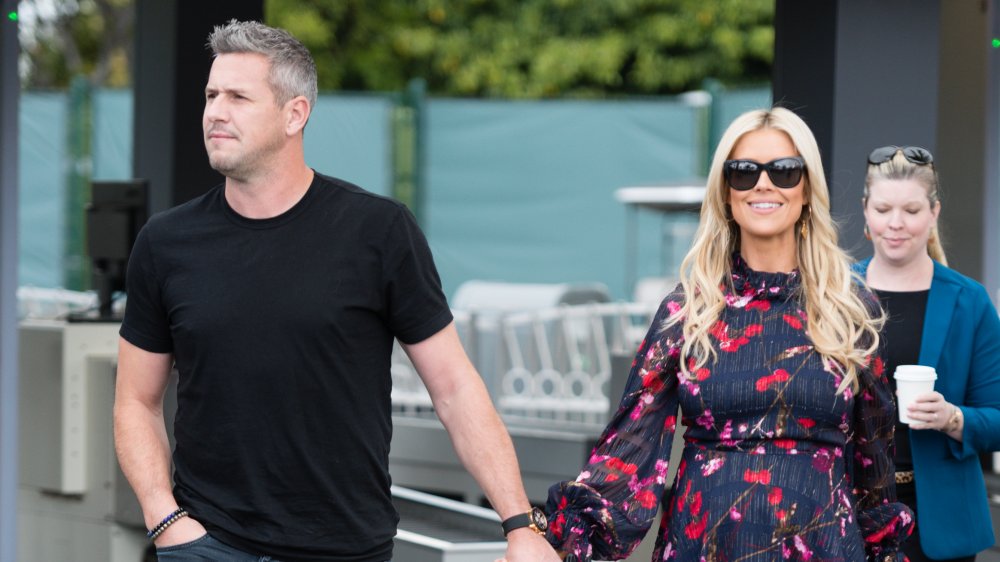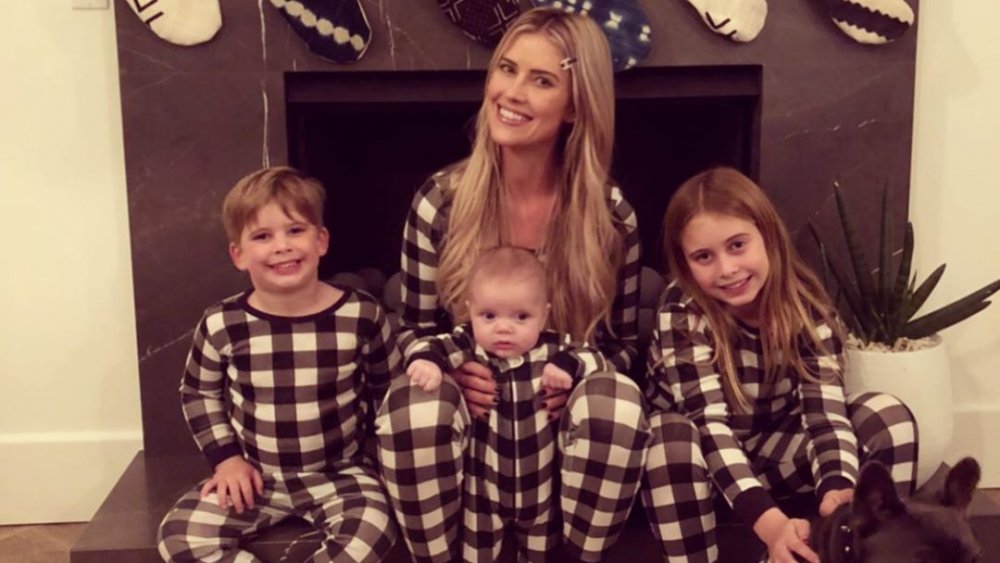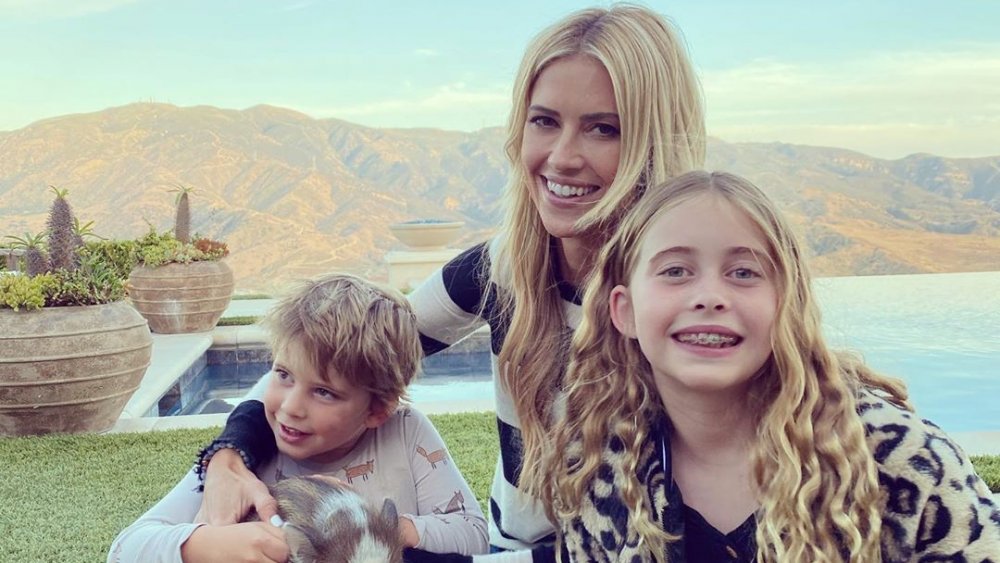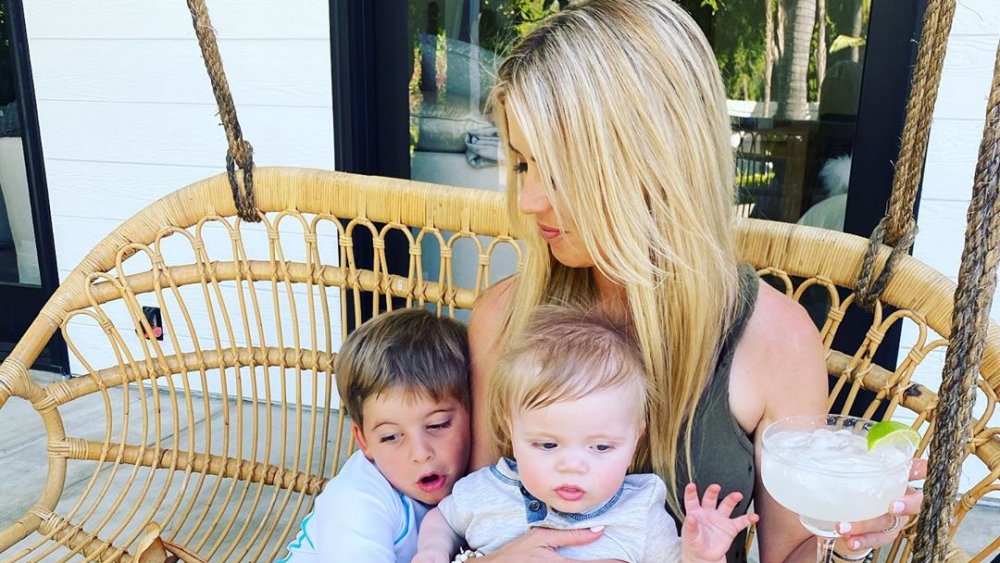Lawyer Reveals What Christina And Ant Anstead's Divorce Means For Their Blended Family
When HGTV star Christina El Moussa (as she was then known) met and married British TV presenter Ant Anstead, both of them brought to the marriage kids from their previous relationships. Well, the couple managed to make this newly-blended family of theirs work for nearly two years, but when the wheels fell off in September of 2020 as per Christina's sad Instagram announcement, that's when things probably started to get complicated. While marriages may be made in heaven, everyone knows that divorces are made in courtrooms. In order to get some insight, we spoke with divorce lawyer Holly Davis, a partner at the law firm of Kirker Davis LLP.
According to Davis, when the couple's divorce is finalized, the only legally-mandated co-parenting they will be doing is that of one-year-old son Hudson. As you may remember, he is the first (and last) child the Ansteads had together. The attorney says this couple "will likely have a shared possession schedule of the child, depending on whether or not one parent spent more time care-giving to the child than the other. Typically, that parent would have more time with the child and the other parent would have a slightly less time possession schedule." As for the other kids, though, she explains, "Christina would not have access or possession to her step-children with Ant [and] Ant would not have access to his step-children after divorce."
How divorce can be extra hurtful to a blended family
Davis points out that the split "means they are no longer a blended family." She says that divorces can be especially tough on blended families when a couple breaks up after a relatively short time together, since "the kids get caught in the cross fire and now the step children, who all had to mash up together and live together and start thinking of themselves as one family...have to come to the understanding that they are leaving their step-siblings and [the step-siblings are] leaving them too." Kind of a lot to process for a kid.
In Davis' opinion, the Ansteads "should have known the impact on their children of mashing them together when they first became married." She says that she's sure that divorce was a hard choice for the couple to make (as per Instagram, it was, in fact, a "difficult decision"), but her sympathy lies with the children of the family who will likely "need some assistance and counseling around what this change means."
Sometimes un-blending can be a good thing, though
The fact that the Ansteads decided to part ways after less than two years of marriage may possibly indicate (although we do not know for sure) that their family was failing to blend in Brady Bunch fashion. Davis says that blending fails are a known cause of divorce for couples attempting to create one family out of two (or more) sets of kids, especially when it comes to breakups that occur within a fairly short time of a marriage taking place. She says in this case, "It is possible that the children did not blend well together and the parents were not willing to continue the relationship because of it," and offers the informed opinion that, "it would not be a bad thing to separate them by getting the divorce."
Davis cautions, however, "Without knowing more details, though, we should assume that the children were blending fine, and it was the parent's decision to end the relationship and therefore change their children's family and house yet again."
The kids are going to have a tough time of it
Davis generously allows that now must be "an interesting time for Christina and Ant as parents to their children." Her feeling about the probable outcome is that the kids will need professional help in order to cope with the fallout from their family's abrupt un-blending. The kids, except for Hudson, have had to cope with an earlier splitting up of their former families, and Davis says that "second divorces in blended families are very tough on children and their stability." She then goes on to explain, "Lots of counseling is typically needed in these situations to navigate how the children are feeling about all of this transition and change in their foundational image of family, home, and marriage."



